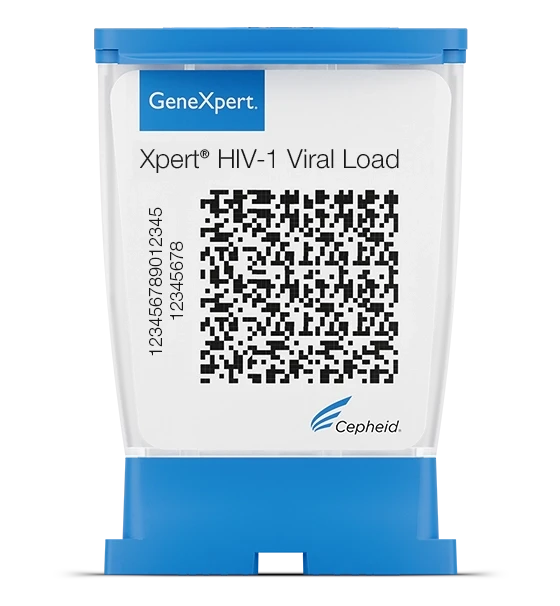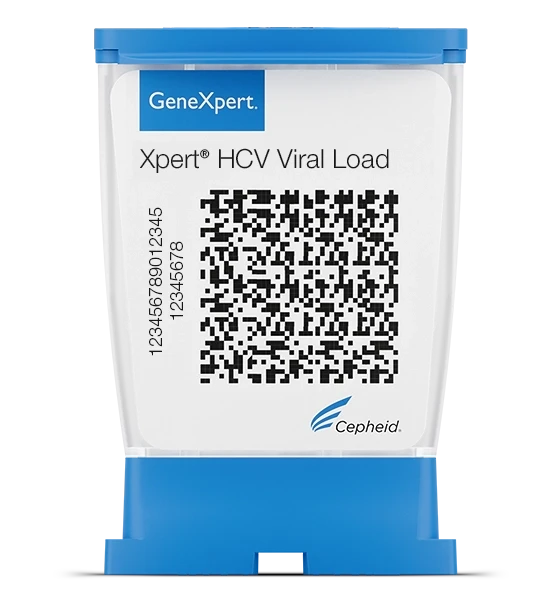
Xpert® HIV-1 Viral Load
Dualer Zielnachweis für erweiterte Abdeckung und hervorragende Leistung
Um Preise zu sehen, melden Sie sich an oder erstellen Sie ein MyCepheid-Konto.
Größe(n) der Testpackung

10 Tests
GXHIV-VL-CE-10
Menge
Preis pro Einheit
Zwischensumme
USD
Das Produkt ist in Ihrer Region nicht erhältlich.
Insgesamt
{{currency}}
0
Fehler beim Hinzufügen von Artikeln zum Warenkorb. Wenn dieser Fehler weiterhin besteht, wenden Sie sich bitte an Digital Support.
Der Bedarf
Laut Schätzungen der Weltgesundheitsorganisation (WHO) lebten Ende des Jahres 2019 weltweit 38 Millionen Menschen mit HIV.1
Die Bestimmung der Konzentration von HIV-1-RNA (die sogenannte HIV-Viruslast) im Blutplasma mithilfe Nukleinsäure-basierter molekularer Diagnostiktests hat sich in der Standardversorgung als prognostischer Marker für HIV-Patienten und das Ansprechen auf die antiretrovirale Therapie etabliert.
Die Beurteilung der Viruslast
ist, allein oder in Kombination mit CD4-T-Zellen, ein aussagekräftiger Prognosefaktor für Krankheitsprogress und deshalb von großem Nutzen.2-7
Der Bedarf an einem flexiblen Schnelltest zur Bestimmung der HIV-Viruslast, der sich an ein beliebiges Durchsatzvolumen anpasst und den Zugang für dringende Proben jederzeit ermöglicht, ist größer als je zuvor, weil jeder einzelne Patient eine bessere Versorgung verdient.
Die Bestimmung der Konzentration von HIV-1-RNA (die sogenannte HIV-Viruslast) im Blutplasma mithilfe Nukleinsäure-basierter molekularer Diagnostiktests hat sich in der Standardversorgung als prognostischer Marker für HIV-Patienten und das Ansprechen auf die antiretrovirale Therapie etabliert.
Die Beurteilung der Viruslast
ist, allein oder in Kombination mit CD4-T-Zellen, ein aussagekräftiger Prognosefaktor für Krankheitsprogress und deshalb von großem Nutzen.2-7
Der Bedarf an einem flexiblen Schnelltest zur Bestimmung der HIV-Viruslast, der sich an ein beliebiges Durchsatzvolumen anpasst und den Zugang für dringende Proben jederzeit ermöglicht, ist größer als je zuvor, weil jeder einzelne Patient eine bessere Versorgung verdient.
(1) WHO HIV/AIDS Key Fact updates July 2020. Abgerufen im Juli 2020 https://www.who.int/news-room/fact-sheets/detail/hiv-aids
(2) Katzenstein DA, et al. The relation of virologic and immunologic markers to clinical outcomes after nucleoside therapy in HIV-infected adults with 200 to 500 CD4 cells per cubic millimeter. AIDS Clinical Trials Group Study 175 Virology Study Team. N Engl J Med. 1996 Oct 10;335(15):1091-8.
(3)Mellors JW, et al. Plasma viral load and CD4+ lymphocytes as prognostic markers of HIV-1 infection. Ann Intern Med. 1997 Jun 15;126(12):946-54.
(4)Mellors JW, et al. Prognosis in HIV-1 infection predicted by the quantity of virus in plasma. Science. 1996 Mai 24;272(5,265):1167-70.
(5)O'Brien WA, et al. Changes in plasma HIV-1 RNA and CD4+ lymphocyte counts and the risk of progression to AIDS. Veterans Affairs Cooperative Study Group on AIDS. N Engl J Med. 1996 Feb 15;334(7):426-31.
(6) Ruiz L, et al. Quantitative HIV-1 RNA as a marker of clinical stability and survival in a cohort of 302 patients with a mean CD4 cell count of 300 x 10(6)/l. Aids. 1996 Sep;10(11):F39-44.
(7)Saag MS, et al. HIV viral load markers in clinical practice. Nat Med. 1996 Jun;2(6):625-9.
(2) Katzenstein DA, et al. The relation of virologic and immunologic markers to clinical outcomes after nucleoside therapy in HIV-infected adults with 200 to 500 CD4 cells per cubic millimeter. AIDS Clinical Trials Group Study 175 Virology Study Team. N Engl J Med. 1996 Oct 10;335(15):1091-8.
(3)Mellors JW, et al. Plasma viral load and CD4+ lymphocytes as prognostic markers of HIV-1 infection. Ann Intern Med. 1997 Jun 15;126(12):946-54.
(4)Mellors JW, et al. Prognosis in HIV-1 infection predicted by the quantity of virus in plasma. Science. 1996 Mai 24;272(5,265):1167-70.
(5)O'Brien WA, et al. Changes in plasma HIV-1 RNA and CD4+ lymphocyte counts and the risk of progression to AIDS. Veterans Affairs Cooperative Study Group on AIDS. N Engl J Med. 1996 Feb 15;334(7):426-31.
(6) Ruiz L, et al. Quantitative HIV-1 RNA as a marker of clinical stability and survival in a cohort of 302 patients with a mean CD4 cell count of 300 x 10(6)/l. Aids. 1996 Sep;10(11):F39-44.
(7)Saag MS, et al. HIV viral load markers in clinical practice. Nat Med. 1996 Jun;2(6):625-9.
Die Lösung
Xpert HIV-1 Viral Load ist ein quantitativer Test, der eine bedarfsbasierte molekulare Testung ermöglicht.
Xpert HIV-1 Viral Load basiert auf der GeneXpert® Technologie und automatisiert das Testverfahren, einschließlich RNA-Extraktion, Reinigung, Reverse Transkription und cDNA-Quantifizierung in Echtzeit in einer voll integrierten Kartusche.
Eine neue Definition von „einfach“:
Einfach
Xpert HIV-1 Viral Load basiert auf der GeneXpert® Technologie und automatisiert das Testverfahren, einschließlich RNA-Extraktion, Reinigung, Reverse Transkription und cDNA-Quantifizierung in Echtzeit in einer voll integrierten Kartusche.
Eine neue Definition von „einfach“:
Einfach
- Einmal täglich oder bedarfsbasiert
- Keine besonderen räumlichen Anforderungen
- Keine tägliche Wartung und kein tägliches Management flüssiger Abfälle
- Test-Laufzeit 91 Minuten mit einem Viruslast-Trendbericht*
- Keine Batch-Verarbeitung, keine Verzögerung
- Minimale „Hands-on-Time“
- Kompatibel mit jedem Probenvolumen
- Liefert bis zu 403 Viruslast-Ergebnisse in 8 Stunden^
- Direkter Zugriff, rund um die Uhr verfügbar
- Gleichzeitige Durchführung verschiedener Tests auf derselben Plattform
- Integrierte Qualifizierungsstandards in jedem Testdurchlauf führen zu festen Kosten pro berichtetem Ergebnis und sind so unabhängig vom täglichen Volumen
* Trendbericht verfügbar bei mehrmaliger Messung der Viruslast der Patient/innen auf demselben GeneXpert.
^ Probendurchsatz auf Infinity-80; interne Analyse.
^ Probendurchsatz auf Infinity-80; interne Analyse.
Die Auswirkungen
- Gesteigerte Effizienz: Verkürzte „Hands-on-Time“ durch vereinfachten Workflow und bedarfsbasiertes Testen
- Verbesserung der Patientenversorgung: Schnelle Ergebnisse ermöglichen schnellere und geeignete Anpassungen der Therapie
- Vorteil für den Patienten: Ergebnisse und Behandlungsentscheidungen am selben Tag verkürzen die Zeit der Ungewissheit und das Warten bis zur klinischen Terminvergabe
Bringen Sie Ihr Labor voran
- Keine Wartezeit: Testdurchführung rund um die Uhr mit wahlfreiem Zugriff
- Einfach und organisiert: Echte 24/7-Verfügbarkeit wird anderen dringenden Testanfragen gerecht
- Flexibel: Anpassung an beliebige Durchsatzanforderungen
- Verbesserte Probenbearbeitung: Kürzere Laufzeiten bis zum Ergebnis ermöglichen eine bessere Deckung des klinischen Bedarfs und einen besseren Service
Leistung
Nicht in allen Ländern erhältlich. Die neue Assay-Version Xpert HIV-1 Viral Load XC ist nur in der Europäischen Union und in den Ländern, die die CE-Kennzeichnung akzeptieren, erhältlich (Link zur neuen Produktseite). Für andere Länder, in denen die Produktregistrierung noch nicht abgeschlossen ist, steht der Xpert HIV-1 Viral Load Assay zur Verfügung. Bitte wenden Sie sich an den lokalen Cepheid-Vertreter, um weitere Informationen zur Verfügbarkeit des neuen Produkts zu erhalten.







